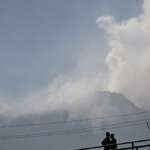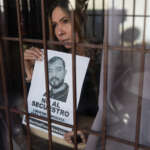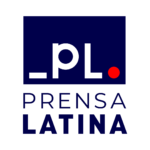A Closer Look at Colombia
Colombia Flag

Colombia Formation Date
July 20, 1810
Colombia Capital Name
Bogotá
Colombia Neighbours
Exploring Colombia
Colombia: A Country of Vibrant Culture and Rich History
Colombia, located in the northwest corner of South America, is a country known for its diverse landscapes, rich history, and vibrant culture. It is the only country in South America to have coastlines on both the Pacific Ocean and the Caribbean Sea, making it a popular destination for tourists seeking both beach and mountain experiences. With a population of over 50 million people, Colombia is the third most populous country in Latin America and is home to a variety of ethnic groups, languages, and religions.Key Takeaways:
- Colombia is located in the northwest corner of South America and has coastlines on both the Pacific Ocean and Caribbean Sea. - It has a population of over 50 million people and is known for its diverse landscapes, rich history, and vibrant culture. - The country has a complex political history but has made significant strides in recent years towards stability and economic growth. - Colombia's economy is largely based on natural resources such as oil, coal, and coffee, but it also has a thriving tourism industry. - Spanish is the dominant language in Colombia, but there are also over 70 indigenous languages spoken throughout the country.Geography:
Colombia's geography is incredibly diverse, with three main regions: the Andes Mountains, the Caribbean Coast, and the Amazon Rainforest. The Andes Mountains run through the western part of the country and are home to many active volcanoes. The Caribbean Coast is known for its beautiful beaches and warm climate, while the Amazon Rainforest covers about one-third of Colombia's total land area. The country is also rich in natural resources, including oil, coal, gold, emeralds, and coffee. These resources play a significant role in Colombia's economy and have helped to drive economic growth in recent years. The climate in Colombia varies depending on the region, but overall it is a tropical country with a wet and dry season. The coastal regions tend to be hot and humid, while the Andean region has a more temperate climate.Origin and History:
Colombia has a long and complex history, with evidence of human settlements dating back over 20,000 years. The country was originally inhabited by various indigenous groups, including the Muisca, Quimbaya, and Tairona. In the 16th century, Spanish conquistadors arrived in Colombia and began colonizing the land. This colonization led to the forced labor of indigenous peoples and the introduction of African slaves. In 1819, Colombia gained independence from Spain and became known as Gran Colombia, which also included Venezuela, Ecuador, and Panama. However, this union dissolved in 1830, and Colombia became an independent country. The 20th century was marked by political instability and violence in Colombia, including a civil war that lasted from 1948 to 1958. In recent years, the country has made significant strides towards peace and stability, with the signing of a peace agreement in 2016 between the government and the Revolutionary Armed Forces of Colombia (FARC).Government and Politics:
Colombia has a presidential representative democratic republic, with a president serving as both head of state and head of government. The country is divided into 32 departments (similar to states) and one capital district. The government is composed of three branches: executive, legislative, and judicial. Colombia has had a history of political instability and violence due to drug trafficking and conflicts with guerrilla groups. However, in recent years, the government has taken steps towards peace and stability, including the demobilization of FARC guerrillas. The country also has strong ties with its neighboring countries and is a member of various international organizations, including the United Nations and the Organization of American States.Commerce and Economy:
Colombia's economy is the fourth largest in Latin America, with a GDP of over $300 billion. The country's economy is largely based on natural resources, including oil, coal, and coffee. Colombia is the world's second-largest producer of coffee, and it is a significant exporter of oil and coal. In addition to natural resources, Colombia also has a thriving tourism industry. The country is known for its beautiful beaches, vibrant cities, and rich culture. In recent years, the government has invested in infrastructure and promoted tourism to boost economic growth. The currency used in Colombia is the Colombian peso (COP), and the country has strong trade relations with its neighboring countries as well as with the United States and China.Demographics:
Colombia has a diverse population, with over 80% identifying as mestizo (mixed European and indigenous ancestry). The remaining population is made up of Afro-Colombians, indigenous peoples, and people of European descent. The majority of Colombians live in urban areas, with the largest cities being Bogotá, Medellín, and Cali. The country also has a relatively young population, with a median age of 31 years old.Culture:
Colombian culture is a blend of indigenous, Spanish, African, and Caribbean influences. The country is known for its vibrant art scene, including street art in cities like Bogotá and Medellín. Music also plays a significant role in Colombian culture, with genres like salsa, cumbia, and vallenato originating from the country. Festivals and traditions are an essential part of Colombian culture. Some popular festivals include Carnival in Barranquilla, the Flower Festival in Medellín, and the Black and White Carnival in Pasto. Colombians also have a strong sense of family and community, and family gatherings are an essential part of their culture. The country also has many national holidays, including Independence Day on July 20th and Christmas.Languages and Religion:
The official language of Colombia is Spanish, which is spoken by over 99% of the population. However, there are also over 70 indigenous languages spoken throughout the country, highlighting the cultural diversity of Colombia. Religion in Colombia is predominantly Roman Catholic, with over 70% of the population identifying as Catholic. However, there is also a significant Protestant and evangelical Christian population. Indigenous religions and Afro-Colombian religions also have a presence in the country.Education and Healthcare Systems:
Colombia has made significant strides in improving its education system in recent years. The country has a literacy rate of over 94%, and education is compulsory for children between the ages of five and 15. There are also many universities and technical schools throughout the country, with the top universities located in Bogotá. The healthcare system in Colombia is divided into two sectors: public and private. The public system provides healthcare to those who cannot afford private insurance, while the private system is available to those who can afford it. The country has made efforts to improve its healthcare system in recent years, with a focus on providing universal healthcare to all citizens.Sports and Recreation:
Sports play a significant role in Colombian culture, with football (soccer) being the most popular sport. The Colombian national football team has had success on the international stage, including reaching the quarter-finals in the 2014 FIFA World Cup. Other popular sports in Colombia include cycling, baseball, and boxing. The country also has many opportunities for outdoor activities such as hiking, surfing, and birdwatching.Tourism:
Colombia has become an increasingly popular tourist destination in recent years, thanks to its diverse landscapes, rich culture, and warm hospitality. Some popular tourist attractions include the colonial city of Cartagena, the coffee region of Salento, and the Lost City trek in the Sierra Nevada de Santa Marta. The country also has a well-developed tourism infrastructure, with many hotels, restaurants, and transportation options available for visitors. The government has also invested in promoting sustainable tourism and preserving natural areas.Travel Information for Foreign Visitors:
If you are planning to visit Colombia, there are a few things you should know before your trip. Most visitors will need a valid passport and a tourist visa to enter the country. It is also recommended to have proof of yellow fever vaccination when entering Colombia. In terms of health and safety, it is essential to take precautions against mosquito-borne illnesses such as Zika and dengue fever. It is also advised to avoid traveling to certain regions of the country that may still have security concerns. When visiting Colombia, it is essential to respect local customs and etiquette. This includes dressing modestly when visiting religious sites and being mindful of cultural differences. The currency used in Colombia is the Colombian peso (COP), and credit cards are widely accepted in major cities. However, it is always a good idea to have some cash on hand for smaller purchases.Quotes:
- "Colombia is magical realism." - Gabriel García Márquez - "Colombia is the only country in South America with coastlines on both the Pacific Ocean and Caribbean Sea." - Unknown - "Colombia is a country of great diversity, not only in terms of its landscapes but also its people." - Juan Manuel SantosConclusion:
Colombia is a country with a complex history and diverse culture. Despite its past struggles, the country has made significant strides towards peace and stability in recent years. With its beautiful landscapes, vibrant cities, and warm hospitality, Colombia is a must-visit destination for any traveler. As the country continues to develop and promote sustainable tourism, it is sure to become an even more popular destination in the future.Colombia Highest Point Name
The highest point in Colombia is Pico Cristobal Colon, at an elevation of 5,775 meters (18,950 feet) above sea level. It is located in Los Nevados National Park in the Andes Mountains. Pico Cristobal Colon is the highest mountain in the northern Andes chain and is also known as the highest point in Colombia.
Colombia Capital Longitude
Bogotá, Colombia has a longitude of 74.0721° W.
Colombia Capital Latitude
Bogotá, the capital of Colombia, is located at an approximate latitude of 4.5980° N.
Colombia Official Languages
The official language of Colombia is Spanish, known locally as castellano. Other languages spoken in Colombia include indigenous languages such as Wayuu, Embera, Kogi, Chimila, and more. English, Portuguese, and Afro-Colombian languages such as Palenquero are also spoken in some parts of the country.
Colombia Ethnic Groups
Colombia is a culturally diverse country, with more than 90 different ethnic groups that are interspersed throughout the national territory. The major ethnic groups in Colombia include the Afro-Colombian, Mestizo, Indigenous, and Romani populations. The majority of the population is made up of Mestizos, who are of mixed European and Indigenous ancestry. Afro-Colombians are descendants of enslaved Africans who were brought to the country by Spanish colonists. Indigenous Colombians number over one million and include over 80 distinct ethnic groups, many of which inhabit remote regions of the country. The Romani population includes approximately 500,000 people, making it the largest minority group in the country. There are also minorities of Middle Eastern, Chinese, and Japanese descent, as well as smaller pockets of other international populations.
Colombia Religions
Colombia is a religiously diverse country with most of the population identifying as Christian. Around 79% of the population identifies as Roman Catholic, while 17% are members of various Protestant denominations. Other religions in Colombia include Jehovah’s Witnesses, Judaism, Islam, Hinduism, Buddhism, and Afro-Caribbean beliefs. In recent years, irreligious Colombians have also become increasingly common in the country’s urban areas due to the rising secularization of Colombian society.
Colombia Total Area
The total area of Colombia is 1,141,748 square kilometers (440,831 square miles). Colombia is the 26th-largest country in the world by land area.
Colombia Land Area
Colombia has a total land area of 1,138,910 km2 (439,739 sq mi).
Colombia Water Area
The total water area of Colombia is approximately 84,300 km2 (32,491 mi2). This means that Colombia is home to a total of about 0.975% of the Earth's surface water sources. Most of Colombia's primary water sources are surface water sources, such as coastal lagoons, rivers, streams, wetlands, and lakes. The main rivers in Colombia are the Magdalena, Cauca, and Orinoco.
Colombia Total Population
49,046,000
Colombia Currency Name
The official currency of Colombia is the Colombian Peso (COP).
Colombia Currency Code
The currency code for Colombia is COP.
Colombia Currency Symbol
The Colombia country's currency symbol is COP.
Colombia Time Zones
- Standard Time: UTC-05:00
- Daylight Saving Time: UTC-04:00
Colombia uses Central Standard Time (CST) in UTC-05. Daylight saving time is used from the first Sunday in October at midnight when the time is shifted forward by one hour to UTC-04. This is in effect until the second Sunday in March at 12:00am when the time reverts to the standard time zone UTC-05.
Colombia Calling Code
+57
Colombia Internet TLD
www.aveholidays.co
How to Say "Colombia" In Different Languages?
- Bangla
- কলম্বিয়া (bn-BD)
- Chinese
- 哥伦比亚 (zh-CN)
- Arabic
- كولومبيا (ar-EG)
- French
- Colombie (fr-FR)
- German
- Kolumbien (de-DE)
- Hindi
- कोलम्बिया (hi-IN)
- Indonesian
- Kolombia (id-ID)
- Persian
- کلمبیا (fa-IR)
- Hebrew
- קולומביה (he-IL)
- Italian
- Colombia (it-IT)
- Japanese
- コロンビア (ja-JP)
- Korean
- 콜롬비아 (ko-KR)
- Yoruba
- Kolombia (yo-NG)
- Polis
- Kolumbia (pl-PL)
- Portuguese
- Colômbia (pt-PT)
- Russian
- Колумбия (ru-RU)
- Spanish
- Colombia (es-ES)
- Thai
- โคลอมเบีย (th-TH)
- Turkish
- Kolombiya (tr-TR)
- Vietnamese
- Colombia (vi-VN)
Colombia Popular Holidays
- Mother's Day
- 10th of May
- Festival of Las Jaivas
- February / March
- New Year's Day
- 1 January
- Foundation of San Josè de Cúcuta
- 6 January
- Epiphany
- 6 January
- Youth Day
- 23 January
- Feast Day of the Presentation of the Child Jesus
- 2 February
- Valentine's Day
- 14 February
- Flag Day
- 19 March
- World Oral Health Day
- 20 March
- Carnival Monday
- 25 March
- Feast of the Annunciation of the Lord
- 25 March
- Foundation of Medellin
- 2 April
- Foundation of Popayán
- 4 April
- Holy Thursday
- 18 April
- Good Friday
- 19 April
- Feast of San Marcos
- 25 April
- Labor Day
- 1 May
- Foundation of San Juan de Pasto
- 6 May
- Bom Jesus Dioblo
- 13 May
- Feast of San Alberto
- 17 May
- Foundation of Tunja
- 20 May
- Ascension of Jesus Christ
- 30 May
- Foundation of Cartagena
- 1 June
- Feast of San Antonio de Padua
- 13 June
- Feast of Santos Martires del Turb contra los herejes
- 17 June
- Foundation of Honda
- 18 June
- Feast Day of the Sacred Heart of Jesus
- 19 June
- Corpus Christi
- 20 June
- Feast of the Nativity of Saint John the Baptist
- 24 June
- Feast of San Pedro and San Pablo
- 29 June
- Feast of San Benito
- 4 July
- Independence Day
- 20 July
- Feast of San Cristóbal Mártir
- 21 July
- Foundation of Cali
- 25 July
- Foundation of Santa Ana
- 25 July
- Feast of Saint James the Apostle
- 25 July
- Foundation of Mompox
- 1 August
- Feast of the Transfiguration of the Lord
- 6 August
- Battle of Boyacá Day
- 7 August
- Feast of San Lorenzo
- 10 August
- Feast of San Roque
- 10 August
- Assumption of Mary
- 15 August
- Feast of the Immaculate Heart of Mary
- 22 August
- Feast of Santa Rosa de Lima
- 30 August
- Feast of the Exaltation of the Holy Cross
- 14 September
- Feast of Our Lady of Mercy
- 24 September
- Feast of San Jerónimo
- 30 September
- Feast Day of the Guardian Angels
- 2 October
- Feast of the Dedication of the Basilica of Saint Francis of Assisi
- 4 October
- Feast of San Jacinto
- 7 October
- Columbus Day
- 12 October
- Día de la Raza
- 12 October
- All Saints' Day
- 1 November
- All Souls' Day
- 2 November
- Feast of the Dedication of the Lateran Basilica
- 9 November
- Feast of San Rafael
- 14 November
- Feast of Saint Andrew the Apostle
- 30 November
- Feast of Santa Bárbara (Naval Day)
- 4 December
- Immaculate Conception Day
- 8 December
- Feast of Concepción de María
- 8 December
- Feast of the Immaculate Conception
- 9 December
- Feast of Our Lady of Guadalupe
- 12 December
- Christmas
- 25 December
- Day of Innocents / Holy Innocents Day
- 28 December




